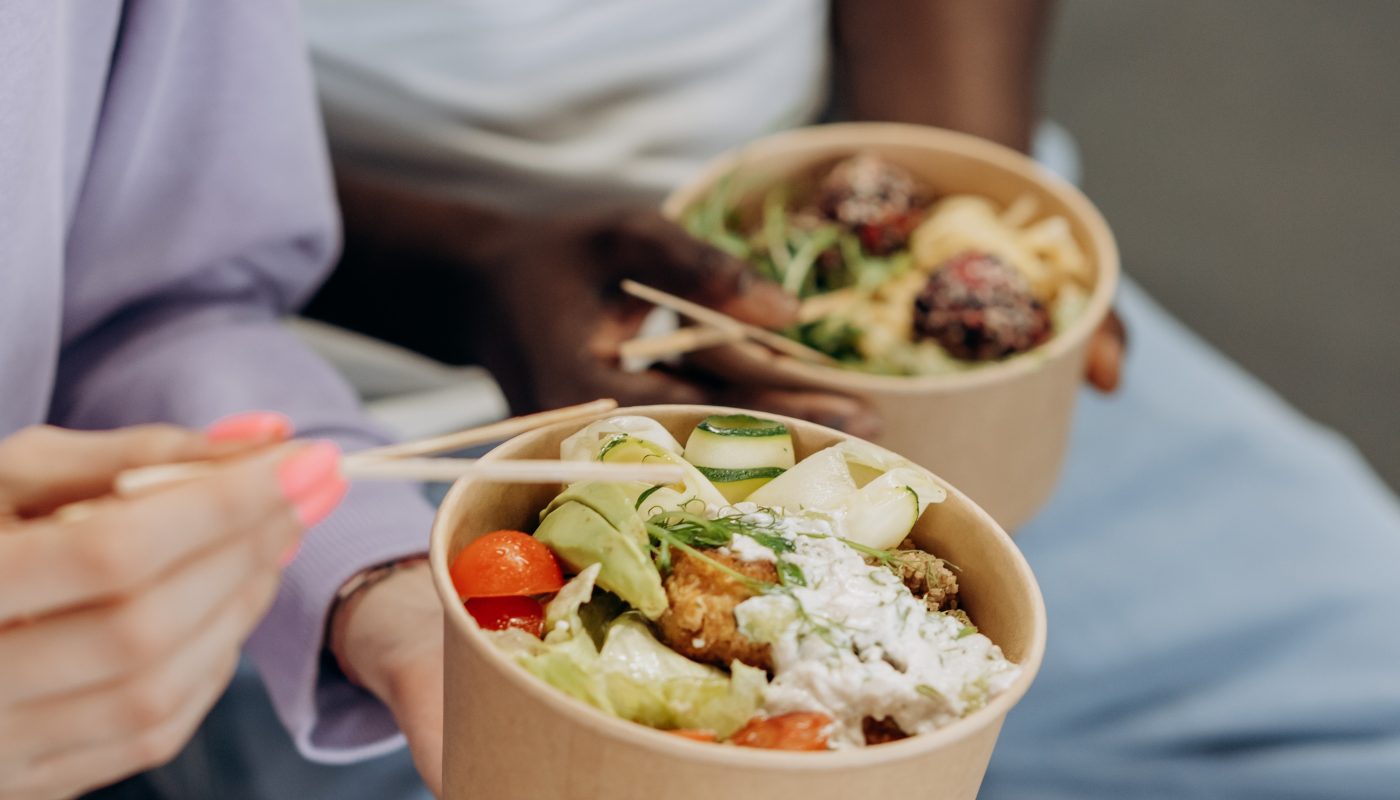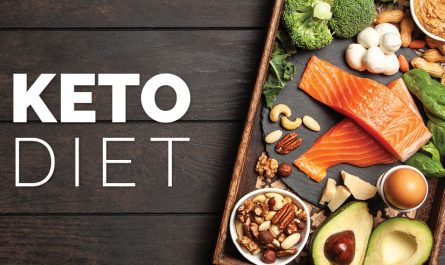Men and women aren’t all built the same. They have different fitness goals in mind and varying nutritional requirements. For instance, an average man requires 2,500 calories a day, and a woman needs 2,000 calories. What works for a woman might not work for a man. Most women, generally, wish to look thinner, less muscular, and more feminine. At the same time, men aim for a bulkier and muscular appearance. Consequently, there arises a need for a meal plan tailored to the needs of men and women separately. Still, one fact is inescapable; calories play a crucial role in meal plans, irrespective of gender
Low-Carb Meal Plan
In a low-carb meal, high-carbohydrate foods are limited, and those rich in protein and fat get the priority. Therefore, grains, starchy vegetables, pasta, bread, processed meats, and high carb fruits are avoided or eaten in small amounts. The low carb meal plans can get formulated in multiple forms, depending on the type and quantity of carbs.
In a low-carb meal plan, the person is advised to have a limited quantity of carbs that would be just the amount required for a person to survive, and instead various foods rich in protein are often added to balance out the nutritional profile. Low carb meals include cutting down on sugar and carbs while getting sufficient protein intake. It is widely adopted to lose weight. Additionally, it encourages the intake of healthy fats. Restricting added sugar and carbs leads to stable blood sugar levels. In addition, it causes a healthy decline in the fat-storing hormone insulin, making it simpler to burn fat stored in the body.
Furthermore, having a good amount of protein helps to feel satiated since proteins take more time to digest and hence stay in your stomach for long which leads to reduced food consumption making calorie deficit easier. When calorie intake is low, it automatically aids in weight loss. Low-carb diets have other health benefits associated with them. As per studies, it lowers the risk of type 2 diabetes and metabolic syndrome.
Foods to Eat
- Meat: Beef, lamb, pork, chicken breast.
- Eggs: Omega-3 rich or pastured eggs.
- Vegetables: Spinach, broccoli, cauliflower, carrots
- Fruits: Apples, oranges, pears, blueberries, strawberries
- Fish: Salmon, trout, catfish, haddock
- Nuts and seeds: Almonds, walnuts, sunflower seeds, nut butter
- High-fat dairy: Cheese, butter, heavy cream, yoghourt
- Fats and oils: Coconut oil, butter, olive oil and fish oil
Foods to Avoid
- Sugar: Soft drinks, fruit juices, candy, ice cream and other food items with added sugar.
- Refined grains: Wheat, rice, barley and rye, bread, cereal and pasta.
- Trans fats: Hydrogenated or partially hydrogenated oils.
- Highly processed foods
- Starchy vegetables
Low-Calorie Meal Plan
Calories are the amount of energy in a given amount of food. Your body is constantly in need of energy, and it relies on calories from meals to keep running. In addition, calories provide fuel for every activity you perform. Unfortunately, the calories we consume are either used for energy release if taken in excessive quantities it turns into fat. And the accumulation of excessive fat results in weight gain.
In simple terms, the calorie quantity in a given amount of food is the energy density. A high energy density suggests that a small amount of food has relatively high calories. Conversely, low energy density means that a significant quantity of food has fewer calories.
If you’re trying to lose weight, one successful technique is to eat low energy density foods. It means eating a larger quantity of food with fewer calories. Thus, stimulating the body to burn the accumulated fat as a reserve for energy release.
High Protein Meal Plan
Study shows that following a high protein meal plan lowers ghrelin concentrations, a hormone related to hunger. Thus, increasing the feeling of fullness. Replacing carbs and fat with protein lowers the hunger hormone and multiple satiety levels, resulting in a significant decrease in appetite. It is primarily how high protein meal plans help lose weight. It can make you naturally consume fewer calories.
Animal products are often termed “complete protein” since they include all of the necessary amino acids in the appropriate proportions required by the human body. Eggs, dairy, meat, fish, and poultry are a few examples. Plant-based protein falls behind in comparison to animal protein. However, people eat them as complementary protein. Complementary proteins are two or more plant-based foods that, when combined, contain all essential amino acids.
Foods to Include
- Meats: Chicken, turkey, lean beef, pork
- Fish: Salmon, sardines, haddock, trout
- Eggs: All types.
- Dairy: Milk, cheese, yoghurt
- Vegetables: Green pea, Sweet Corn, Spinach, Avocado, Mushrooms.
- Fruits: Guava, Avocado, Jackfruit, Kiwi, Apricot, Blackberries, Raisins.
- Legumes: Kidney beans, chickpeas, lentils
- Nuts and Seeds: pumpkin seeds, peanuts, almonds.
Foods to Avoid
- Refined Sugar: candy, baked goods, and sodas.
- Refined carbohydrates: bread, pasta, and white rice.
- Saturated Fats: butter, ghee, palm oil, cakes, biscuits, fatty cuts of meat, bacon.
Low Fat Meal Plan
There are two types of fats- good and bad. While good fats are essential for the body’s healthy functioning, bad fats lead to several health issues. Foods that are processed, refined, or fried are typically high in bad fat. Saturated and trans fats are the forms of fat whose consumption needs to be limited. It needs to be remembered that all fat can cause weight gain, they have to be taken in the required amount only to see a positive result. A low-fat meal plan focuses on healthy fats and strictly avoids harmful kinds.
Even in the case of restricted calories in the meal, foods high in trans fat lead to fat tissue redistribution around different body parts like the belly. As a result, it causes extra fat storage in the body, leading to weight gain. In addition, eating trans fat affects the effective blood glucose absorption by the body. As a result, the blood glucose concentration increases, and the body fails to use all of the glucose for energy release. It further adds to the total fat concentration of the body.
It is therefore vital to restrict food items containing bad fats. Low-fat foods include no more than 30% of their calories from fats. A food is considered low fat if it has less than 3 grams of fat per 100 calorie serving.
Foods to Include
- Cereals and Grains: corn, baked crackers, oatmeal, rice, whole-grain bagels, English muffins, pita bread.
- Dairy Product: fat-free cheese, yoghurt, light cream cheese, low-fat cottage cheese, milk.
- Meat: shrimp, skinless chicken, turkey breast, egg whites, lean cuts of meat.
- Vegetables: Sweet potatoes, Cauliflower, Brussels sprouts, Cabbage, Turnips, Beans, Kale.
- Fruits: Most fruits are abundant in vitamins, minerals, and fibre while low in fat. You can have Blueberries, Cherries, Dragon fruit, Grapefruit, Kiwi fruit, Oranges.
- Drinks: Water, homemade buttermilk, green tea, herbal tea, black coffee.
Foods to Avoid
- Junk Food: Fried foods, frozen foods, zero-calorie drinks, soda, refined sugar, and processed foods.
- Meat: Fatty part of beef and pork.
- Dairy: Cream cheese.
- Beverages: Packaged fruit juice, packaged smoothies, soda, diet soda, and packaged buttermilk.
Vegan Meal Plan
Vegan diets are entirely plant-based and exclude meat, eggs, or dairy products. Even though animal products contain a good amount of protein many of the products also come with high amounts of cholesterol and fat.
As per studies, vegans are more likely to have a lower BMI than non-vegans, implying a vegan diet promotes weight loss or that vegans tend to make weight-conscious choices. Vegan food items naturally contain low calories. One of the prime causes of weight gain is the intake of more calories than needed to carry out daily activities. Eating low-calorie food items will result in more calorie burn, causing weight loss. Additionally, vegan diets contain plenty of fibre. High fibre meals give the feeling of being full for a long time, preventing overeating.
Foods to Include
- Grains: wheat, rice, quinoa, and oats, whole-wheat pasta
- Fruits: papaya, peaches, melons, berries, apples, and avocados.
- Vegetables: dark leafy greens, cauliflower, peppers, beans, sweet potatoes,
- Nuts and Seeds: cashew nuts, chia seeds, hemp seeds, almonds, walnuts.
- Alternatives of Dairy Product: almond, soy, or rice milk, tofu
- Drinks: green, lavender, chamomile, or ginger tea, fruit smoothies, coffee
Foods to Avoid
- All Meat Products: chicken, fish, mutton, beef, prawns, shellfish
- Milk and milk products: curds, cheese, paneer, buttermilk, ghee, chocolates, creams, ice creams
- Animal products like honey and food colouring from insects like cochineal.
Paleo Meal Plan
Paleo means prehistoric, this kind of diet plan is influenced by what people eat during that period. This meal plan includes whole, unprocessed animal and plant foods items. It promotes the consumption of low-calorie, high-nutrient foods such as lean protein, fresh fruits and vegetables, and healthy fats. The paleo diet excludes processed foods, sugar, dairy, and grains. However, some paleo eating plan variants allow dairy and rice.
Unlike other diets, the paleo meal plan does not require calorie tracking. Instead, it limits the food groups mentioned above. They are all significant calorie contributors in today’s time. Food items that prioritise whole foods are beneficial for weight loss and general health. They keep the body satiated, contain fewer calories, and cut down on processed meals linked to various ailments. According to research, the paleo diet boosts the production of hormones such as GLP-1, PYY, and GIP, which help the body feel fuller for a long time. As a result, it helps avoid binge eating and helps control body weight.
Foods to Include
- Vegetables: Cauliflower, Broccoli, Brussels sprouts, Sweet potatoes, Cabbage, Spinach
- Fruits: Apples, Berries, Melon, Grapes, Bananas, Citrus Fruits, Peaches
- Eggs
- Nuts and Seeds: Walnuts, Almonds, Cashews, Hazelnuts, Pine nuts, Pumpkin seeds, Chia seeds
- Meat: Lean meat, fish, chicken, turkey, pork.
Foods to Avoid
- Grains: cereal, crackers, rice, pasta, bread and beer.
- Legumes: beans, peas, lentils, tofu, soy foods, and peanuts.
- Processed Foods: refined sugars, salt, refined vegetable oils and artificial sweeteners.
- Sugar and high-fructose corn syrup: Soft drinks, fruit juices, table sugar, candy, pastries, ice cream
Atkins Meal Plan
The Atkins diet is a low-carbohydrate diet and is commonly used to lose weight. You can lose weight by following this meal plan by avoiding high-carb meals while consuming as much protein and fat as possible. Carbohydrates account for more than half of all calorie intake. Therefore, the Atkins meal plan reduces weight by causing a reduction in overall calorie consumption by eating little carbs. A low-carb diet encourages the body to utilise fat rather than sugar for energy release. As a result, it leads to more constant energy levels throughout the day, helping you achieve your weight reduction and health targets. Atkin Meals include food items with high fibre content, which keeps you satiated for a long time. It helps people maintain their weight without being left hungry or food-deprived. At the same time, fibre adds bulk to stool and improves the digestion process. It also removes any toxins from the body.
Foods to Include
- Meats: beef, pork, lamb, chicken, bacon, and others
- Fatty fish and seafood: salmon, trout, sardines
- Eggs: omega-3 rich or pastured
- Low-carb vegetables: kale, spinach, broccoli, asparagus, and others
- Full-fat dairy: butter, cheese, cream, full-fat yoghurt
- Nuts and Seeds: almonds, walnuts, sunflower seeds
- Healthy fats: extra virgin olive oil, coconut oil, avocados, and avocado oil
- Drinks: Water, Coffee, Green Tea
Foods to Avoid
- Sugar: soft drinks, fruit juices, cakes, candy, ice cream
- Grains: wheat, spelt, rye, barley, rice
- High carb vegetables: carrots, turnips, potatoes, sweet potatoes
- High carb fruits: bananas, apples, oranges, pears, grapes
- Legumes: lentils, beans, chickpeas
What Meal Plan is Best for Me?
When it comes to meal plans, we are all a little different. There is no such thing as a one size fits all approach. The best meal plan for you is one that you can stick to. Here are a few things to check while deciding what meal plan fits you best.
- Pick the meal plan that includes foods you enjoy eating. You shouldn’t feel forced to eat. A meal plan that doesn’t fit your food preferences can make it hard to follow. You will not get the desired results unless you can consistently stick to the meal plan.
- Choose a meal plan that is compatible with your health. For example, a meal with foods that make you feel bloated or tired is not recommended.
- No matter what meal plan you choose, a calorie deficit plan is the most widely accepted approach to weight loss. Opt for a meal plan that keeps your calories within your personalised range.
Precautions
- It’s advisable to undergo a medical checkup before starting a low-calorie meal plan, particularly if you have any health issues like high blood pressure or high cholesterol. It is better to incorporate a low-calorie meal plan after a doctor has advised it, as the doctor must check that the person remains healthy while reducing weight.
- As per studies, people with mild to severe renal disease should limit their protein consumption to protect their residual kidney function. Therefore, they should be cautious of high protein meal plans.
- Look at the label when you are not aware of whether food is healthy or not. However, be wary of sugar’s multiple names and health claims that may be deceptive.
Conclusion
There are various meal plans for men that can aid in weight loss, which is healthy in the long term. Remember your unique preferences and dietary requirements for desirable results when choosing a meal plan. Minimise unsustainable or highly restricted diets, and consult with a healthcare practitioner before making dietary adjustments. It is worth noting that diets are frequently used in conjunction with other weight-loss approaches, such as exercise or intermittent fasting, to attain the best results.




